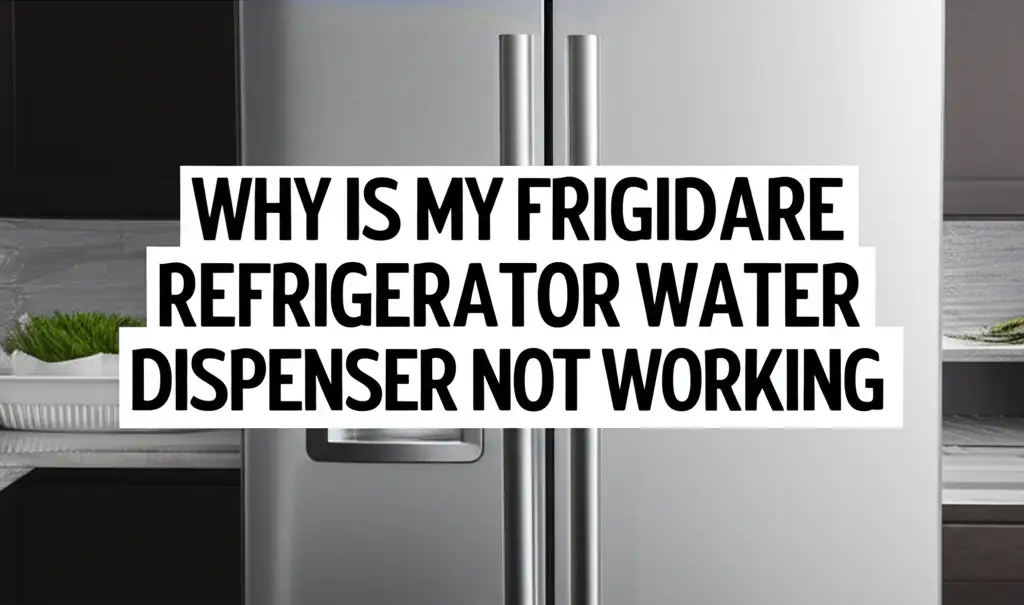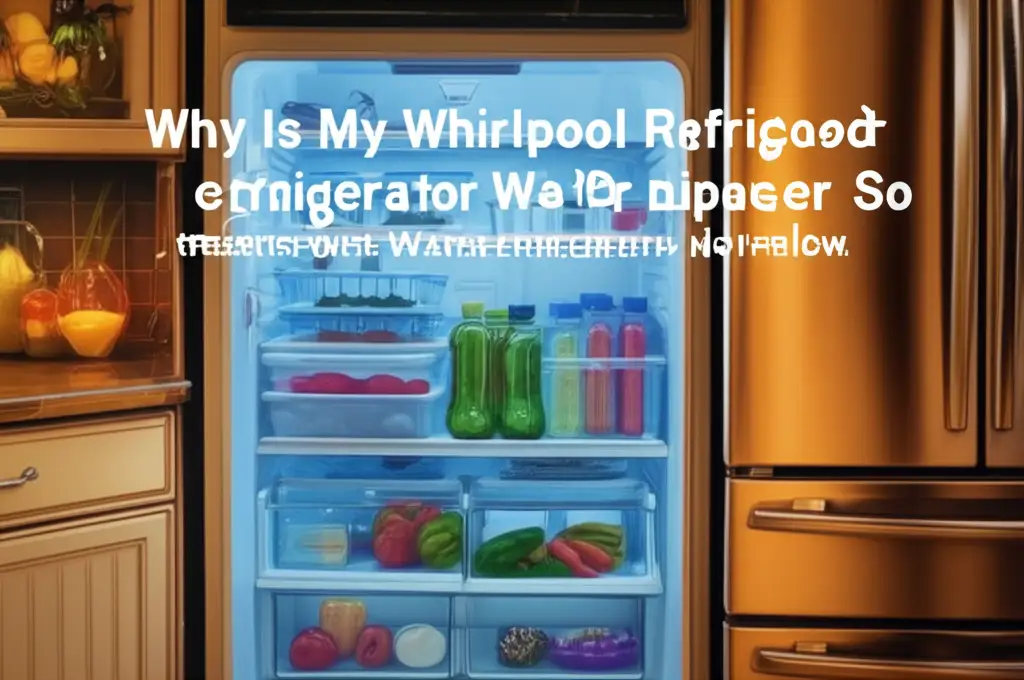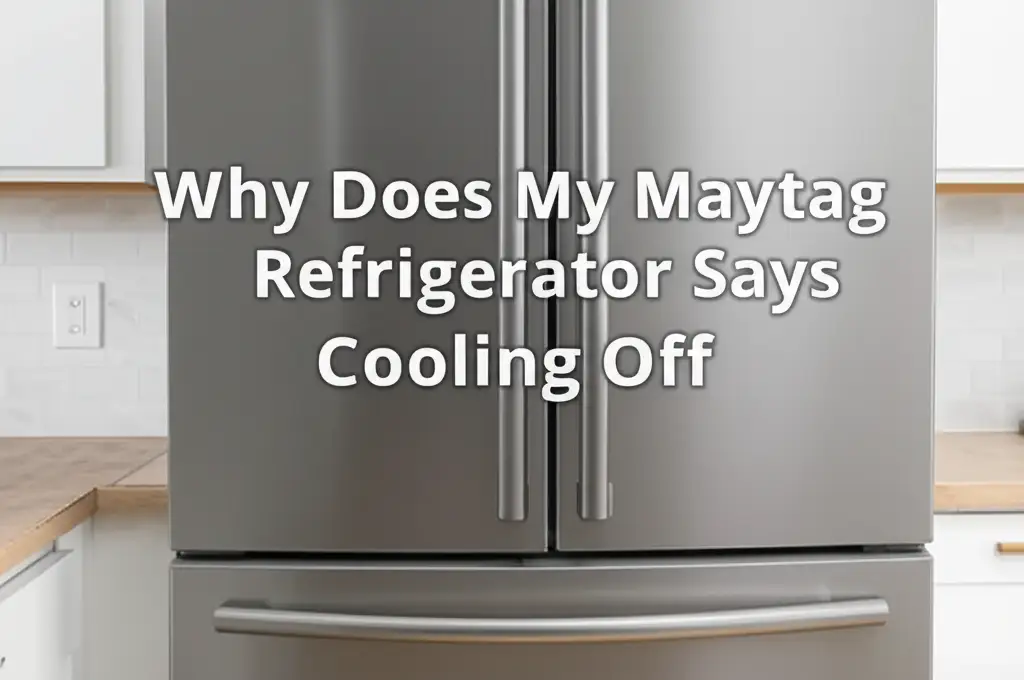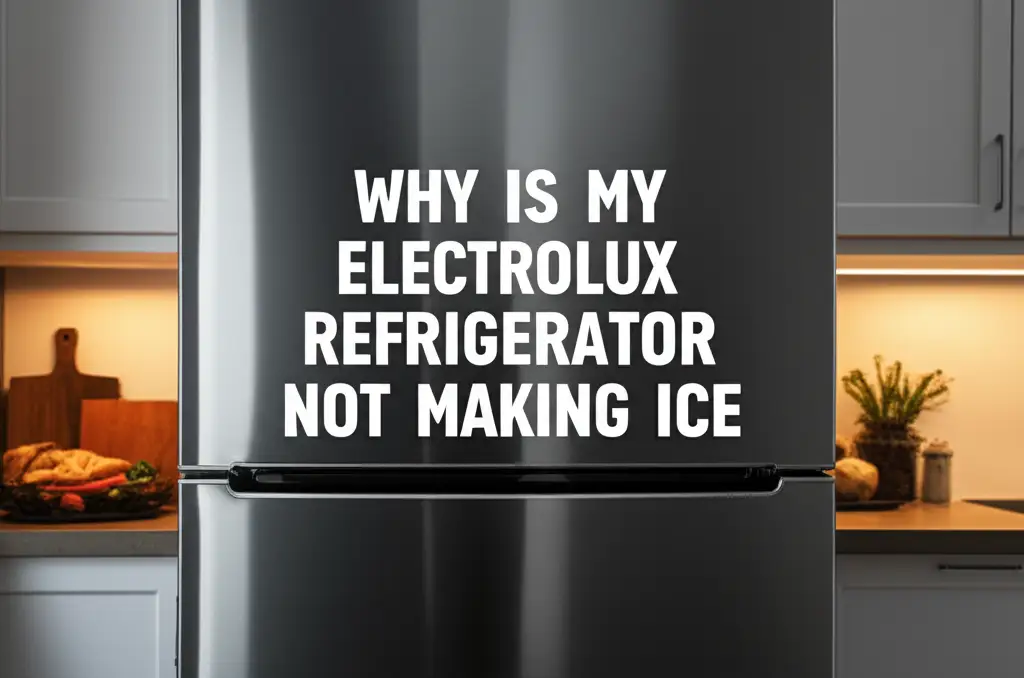· Katria Melrose · Appliance Troubleshooting · 19 min read
Why Is My Lg Refrigerator Freezing My Food
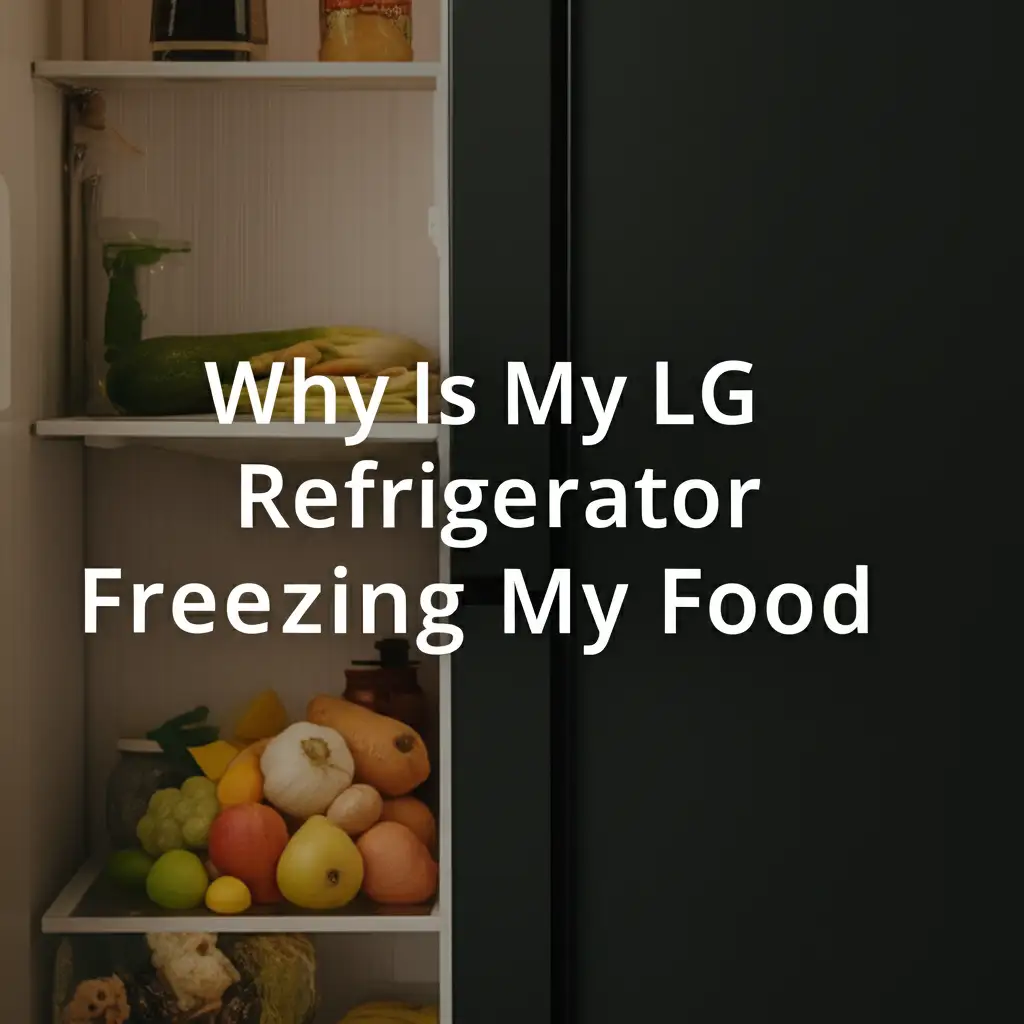
LG Refrigerator Freezing Food? Solutions Revealed.
Waking up to frozen milk or rock-hard vegetables in your refrigerator is a common frustration. You expect your LG refrigerator to keep food fresh, not turn it into an ice block. This problem can waste food and add stress to your daily routine. Many LG refrigerator owners experience this issue. I understand how annoying it feels when your food freezes inside the fresh food compartment.
This guide will explain why your LG refrigerator might be freezing your food. We will look at common reasons like incorrect temperature settings, blocked air vents, and issues with the defrost system. We will also cover faulty components such as the thermistor or control board. You will learn simple steps to diagnose and fix these problems yourself. Our goal is to help you save your groceries and avoid expensive repair calls. Let’s get your LG refrigerator working properly again.
Takeaway
If your LG refrigerator is freezing food, start with these checks:
- Adjust Temperature: Make sure your settings are not too low.
- Clear Vents: Remove obstructions from air vents inside the fridge.
- Inspect Door Seals: Check for gaps in the door gaskets.
- Organize Food: Do not block air vents with food items.
- Check for Ice Buildup: Excess ice indicates a defrost issue.
Your LG refrigerator freezes food most often due to incorrect temperature settings, blocked air vents, or a malfunctioning defrost system. A faulty thermistor or a bad door seal can also cause the fridge compartment to get too cold. Fixing these problems often involves simple adjustments or part replacements.
Incorrect Temperature Settings: A Common Culprit
One of the simplest reasons your LG refrigerator is freezing your food is an incorrect temperature setting. Refrigerators work best when their internal temperature stays between 35°F and 38°F (1.7°C and 3.3°C). If your LG refrigerator is set below this range, especially near 32°F (0°C), food items can easily freeze. Many people adjust their fridge settings without realizing the impact on perishable items.
Always check your display panel first. Sometimes, a button gets pressed by accident. Kids playing nearby can change settings too. Make sure the digital display shows a temperature within the recommended range. I have seen this issue many times, and it is often a quick fix.
Understanding Optimal LG Fridge Temperatures
Your LG refrigerator has specific temperature zones for different foods. The fresh food compartment needs to be cool but not freezing. Most manufacturers suggest a temperature between 35°F and 38°F (1.7°C and 3.3°C). This range keeps bacteria growth slow without turning liquids into ice. Freezers, on the other hand, should be set at 0°F (-18°C) or lower.
A consistent temperature is important for food safety and freshness. If your fridge fluctuates, it can cause problems. Knowing the right temperature helps you maintain your food’s quality. I always advise people to double-check their owner’s manual for specific LG model recommendations.
Adjusting Your LG Refrigerator’s Thermostat
Adjusting the temperature on your LG refrigerator is usually straightforward. Most modern LG models have a digital control panel, often located inside the fridge or on the door. Find the temperature control buttons. They typically look like up and down arrows or have a “Temp” label. Press these buttons to increase the temperature setting.
Increase the temperature by one or two degrees at a time. Wait at least 24 hours for the refrigerator to stabilize. Then, check your food again. Repeat this process until your food no longer freezes but remains adequately chilled. Sometimes, a small change makes a big difference. This step is a primary troubleshooting method for why your LG refrigerator is freezing your food.
Blocked Air Vents: Hindering Airflow
Air circulation is vital for maintaining an even temperature inside your LG refrigerator. Your fridge uses a system of vents to distribute cold air from the evaporator coil throughout the fresh food compartment. If these vents become blocked, cold air can get trapped in certain areas. This causes those specific spots to become much colder than the rest of the fridge, leading to frozen food.
Food items, containers, or even ice buildup can block these vents. This is a common oversight when loading groceries. When I organize my fridge, I make sure no items directly touch the back wall or side vents. Air needs to flow freely to prevent hot spots and cold spots.
Locating LG Refrigerator Air Vents
LG refrigerators typically have air vents located in the back or side walls of the fresh food compartment. You might see slots or grilles. These are where the cold air enters. The freezer section also has vents that direct cold air into the fridge. Sometimes, the return vents are also blocked.
Take some time to look inside your LG refrigerator. Identify all the vent openings. They might be small or covered by plastic panels. Knowing where they are helps you avoid blocking them. This simple inspection can save your produce from freezing.
Clearing Obstructions for Proper Airflow
Once you find the vents, inspect them for obstructions. Move any food items, bags, or containers that are directly in front of or against the vents. If you see ice buildup around the vents, this indicates a larger problem, often related to the defrost system, which we will discuss later. For now, just make sure there is open space.
You can use a soft cloth to wipe down the vents. If there is minor ice, carefully remove it with a plastic scraper. Never use sharp objects, as they can damage the refrigerator lining or components. Ensuring clear airflow is a critical step in stopping your LG refrigerator from freezing your food. Proper airflow helps your entire refrigerator maintain a consistent temperature. For more insights on general refrigerator ice build-up, you might find this article helpful: Why Does My LG Refrigerator Keep Freezing Up.
Faulty Thermistor or Temperature Sensor: Misreading the Cold
Your LG refrigerator relies on a thermistor, also known as a temperature sensor, to accurately read the internal temperature. This small component sends signals to the main control board. The control board then uses these signals to decide when to turn the compressor on or off. If the thermistor is faulty, it can send incorrect temperature readings. For example, it might tell the control board the fridge is warmer than it actually is.
This false reading causes the compressor to run longer than needed. As a result, the fresh food compartment becomes too cold, leading to your food freezing. A bad thermistor is a common cause of temperature problems in refrigerators. I have seen many cases where replacing this small part solves major temperature issues.
Role of the LG Refrigerator Thermistor
The thermistor acts as the refrigerator’s eyes and ears regarding temperature. It is usually a resistor whose resistance changes with temperature. As the temperature drops, the resistance increases, and vice versa. The control board reads these resistance changes to understand how cold the fridge is. This allows it to regulate the cooling cycle.
Most LG refrigerators have multiple thermistors. There can be one for the fresh food section, one for the freezer, and sometimes one for the defrost system. Each plays a role in keeping the appliance working correctly. When one fails, the whole system can get out of sync.
Signs of a Failing Temperature Sensor
How can you tell if your LG refrigerator’s thermistor is failing? One clear sign is inconsistent temperatures. Your food might freeze one day and be perfectly fine the next. You might also notice the compressor running constantly. This happens because the thermistor keeps telling the control board the fridge is warm, even if it is already very cold.
If you have an appliance thermometer, place it in different areas of your fridge. If the readings are far below your set temperature, it points to a sensor problem. A professional technician can test the thermistor’s resistance with a multimeter. If the readings are outside the manufacturer’s specifications, replacement is necessary.
Defrost System Malfunctions: Ice Buildup Issues
The defrost system in your LG refrigerator prevents ice from building up on the evaporator coils. These coils are what make the air inside your fridge cold. If too much ice builds up, it blocks airflow. This makes the refrigerator work harder and can cause temperature inconsistencies, often leading to parts of the fresh food compartment getting too cold.
The defrost system includes several components: a defrost heater, a bimetal thermostat, and a defrost timer or control board. If any of these parts fail, ice can accumulate. This ice can then block air vents, trapping cold air and causing your food to freeze. This is a frequent cause when your LG refrigerator is freezing your food.
The LG Defrost Heater Issue
The defrost heater’s job is to melt the ice that forms on the evaporator coils. It typically turns on for a short period several times a day. If the defrost heater burns out or breaks, it cannot melt the ice. Ice will then build up on the coils. This thick layer of ice acts as an insulator, preventing cold air from reaching the refrigerator compartment efficiently.
When airflow is restricted, the compressor runs longer to try and cool the fridge. This leads to some areas getting excessively cold. You might see visible ice buildup on the back wall of your freezer or even inside the fresh food section near the vents. This common issue is a significant reason for an LG refrigerator freezing your food.
Bimetal Thermostat Failure in LG Units
The bimetal thermostat, or defrost thermostat, is a safety device. It senses the temperature of the evaporator coils. It closes an electrical circuit to turn on the defrost heater only when the coil temperature drops below a certain point (usually around 15°F or -9°C). Once the ice melts and the temperature rises, it opens the circuit, turning the heater off.
If the bimetal thermostat fails, it might not close the circuit when it should. This means the defrost heater never turns on, and ice continues to build up. Alternatively, if it fails in the “closed” position, the heater might run too long, causing other issues. A faulty bimetal thermostat can lead to the same ice buildup problems as a bad heater.
LG Defrost Timer Problems
Some older LG refrigerator models use a mechanical defrost timer. This timer controls when the defrost cycle begins and ends. It cycles between cooling the fridge and running the defrost heater. If this timer fails, it might get stuck in the cooling cycle. This means the defrost heater never activates.
In newer LG models, the defrost function is controlled by the main control board, which acts as a “smart” defrost timer. If the main control board has a glitch or failure in its defrost circuit, it can also fail to initiate defrost cycles. This results in excessive ice buildup and temperature problems. Addressing these defrost system components is crucial when your LG refrigerator is freezing your food. You can learn more about general issues with ice buildup here: Why Does My LG Refrigerator Keep Freezing Up.
Damaged Door Seals and Gaskets: Letting Warm Air In
The door seals, also known as gaskets, on your LG refrigerator play a critical role in maintaining a consistent internal temperature. These rubber or magnetic strips create a tight seal around the refrigerator and freezer doors. They prevent warm air from entering the appliance. If these seals are damaged, cracked, or loose, warm, humid air can seep into the fridge.
This influx of warm air forces the refrigerator’s compressor to work harder and run more frequently to maintain the set temperature. When the compressor runs for extended periods, it can overcool certain sections of the refrigerator, especially those near the cold air vents. This overcooling results in your food freezing. I always check the door seals first when I notice temperature irregularities.
Inspecting LG Refrigerator Door Seals
To inspect your LG refrigerator’s door seals, start by visually examining them. Look for any visible tears, cracks, or gaps. Feel along the entire length of the gasket. It should be pliable and intact. Pay close attention to the corners, as these areas often show wear first.
A simple test is the “paper test.” Close the refrigerator door on a dollar bill or a piece of paper. Try to pull the paper out. If it slides out easily, the seal in that spot is weak. Repeat this test around the entire perimeter of both the refrigerator and freezer doors. A proper seal should hold the paper firmly.
Simple Fixes for Leaky LG Gaskets
If you find a minor issue with your LG refrigerator gasket, you might be able to fix it. Sometimes, the gasket just needs cleaning. Dirt and food particles can accumulate, preventing a tight seal. Wipe down the gasket thoroughly with warm, soapy water. Rinse and dry it completely.
For minor deformations, you can sometimes use a hairdryer on a low setting to gently warm the gasket. This makes the rubber more flexible, allowing you to reshape it. Close the door immediately after warming to help it seal properly as it cools. If the gasket is severely torn or cracked, it will need replacement. Replacing a gasket is a DIY task for many models and can significantly improve your LG refrigerator’s performance.
Overloaded or Improperly Loaded Refrigerator: Distribution Matters
How you load your LG refrigerator can have a big impact on its internal temperature. Many people fill their fridges to capacity, thinking it saves energy. However, an overloaded refrigerator can restrict airflow. The cold air needs space to circulate freely to reach all areas. If shelves are packed too tightly, or large items block vents, parts of your fridge will not cool evenly.
Conversely, an almost empty refrigerator can also cause issues. There is not enough thermal mass to absorb and hold the cold. The compressor might short cycle or run too little. This can lead to uneven cooling. Proper loading helps your LG refrigerator maintain a stable temperature.
The Impact of Refrigerator Load on Temperature
When your LG refrigerator is too full, cold air struggles to move around. The areas directly in the path of the cold air vents will get very cold, causing food there to freeze. Meanwhile, other parts of the fridge might be warmer than desired. This creates inconsistent temperatures, which is bad for food preservation.
An underloaded fridge might struggle with consistency too. With fewer items to absorb the cold, the temperature can fluctuate more quickly. This leads to rapid cooling cycles that can overshoot the target temperature, freezing delicate items. Striking a balance is important.
Strategic Food Placement in Your LG Fridge
To prevent your LG refrigerator from freezing your food, practice strategic food placement.
- Do not block vents: Never place food items directly in front of or against the air vents. Leave at least an inch or two of space around them.
- Avoid the back wall: Foods placed right against the back wall, especially dairy or produce, are often the first to freeze. This area is typically the coldest.
- Distribute evenly: Spread your food out on shelves. Avoid piling everything into one section. This allows cold air to circulate freely around each item.
- Use drawers: Crisper drawers are designed to maintain specific humidity levels and are often slightly warmer than open shelves, making them ideal for sensitive produce.
- Fill gaps: If your fridge is often empty, use water bottles or jugs to fill some space. Water acts as a thermal mass, helping to stabilize the temperature. This helps the refrigerator run more efficiently and prevents hot and cold spots. For insights on how different brands manage food freezing, you might find this article on another brand helpful: Why Is My Whirlpool Refrigerator Freezing My Food.
Main Control Board Issues: The Refrigerator’s Brain
The main control board acts as the brain of your LG refrigerator. It receives input from various sensors, including the thermistor, and then sends commands to components like the compressor, evaporator fan, and defrost system. If the main control board malfunctions, it can send incorrect signals. This can cause the compressor to run continuously or the defrost system to fail. Both scenarios lead to the refrigerator becoming too cold and freezing your food.
Control board issues are less common than other problems. However, they can be complex to diagnose and fix. They often require professional attention. I usually check other, simpler causes first before suspecting the control board.
How the Control Board Influences Temperature
The main control board has programmed logic that dictates the cooling cycles. It processes the temperature readings from the thermistor. Based on these readings and your set temperature, it decides when to turn the compressor on and off. It also manages the defrost cycles.
If the board develops a fault, it might misinterpret sensor data. It could think the fridge is warmer than it is, causing the compressor to overwork. Or, it might fail to initiate a defrost cycle, leading to ice buildup. Any of these failures directly impact temperature regulation.
Diagnosing LG Control Board Problems
Diagnosing a faulty LG main control board can be challenging. There are often no obvious physical signs of damage. Sometimes, you might notice error codes on the display. Check your owner’s manual for a list of common error codes and what they mean.
A technician can use diagnostic tools to test the control board’s outputs. They can also check for voltage fluctuations or component failures on the board itself. If all other components (thermistor, defrost system, fan motors) test fine, the control board is the most likely culprit. Replacing a control board is typically expensive and often requires a professional. This step should be a last resort after checking all other potential issues that could be causing your LG refrigerator to freeze your food.
Evaporator Fan Motor Malfunction: Uneven Cold Distribution
The evaporator fan motor is crucial for distributing cold air throughout your LG refrigerator. Located in the freezer compartment, this fan pulls air over the evaporator coils, where the air gets cold. It then pushes this cold air into both the freezer and the fresh food compartment. If the evaporator fan motor fails or runs intermittently, air circulation becomes poor.
This can lead to a build-up of cold air in the freezer and near the freezer vents in the fridge. Without proper distribution, some areas get excessively cold, freezing your food. Meanwhile, other parts of the fridge might be too warm. This creates uneven cooling, which is a common complaint.
The Role of the Evaporator Fan in LG Refrigerators
The evaporator fan works in conjunction with the compressor and evaporator coils. The coils chill the air, and the fan moves that chilled air throughout the refrigerator and freezer. It ensures that the temperature is consistent across all compartments. A properly working fan means your food stays fresh and cool, not frozen.
If the fan blade is obstructed, or the motor itself is faulty, the airflow lessens. This leads to significant temperature variations. You might hear strange noises coming from the freezer if the fan is struggling, or no noise at all if it has stopped working.
Diagnosing Evaporator Fan Issues
To check your LG evaporator fan, first, listen for it. When you open the freezer door, the fan typically stops. Close the door, or press the door switch manually, and listen for the fan motor running. If you hear no sound, or a grinding noise, it could be failing.
Sometimes, ice buildup can obstruct the fan blades. If there’s heavy ice in the freezer, especially on the back panel, it could impede the fan. You might need to manually defrost the freezer to clear ice around the fan. If the fan still does not run or makes noise after defrosting, the motor may need replacement. This is an important step to ensure cold air reaches all parts of your LG refrigerator and prevents food from freezing.
FAQ Section
Why does only some food freeze in my LG fridge?
Specific food items freeze because they are often placed too close to the cold air vents. These vents are typically at the back of the fridge or near the top. Blocked vents can also trap cold air in one spot. Move items away from these areas and ensure proper airflow for even cooling.
Can I fix a freezing LG fridge myself?
Many common causes like incorrect temperature settings, blocked vents, and faulty door seals are simple DIY fixes. Issues involving the defrost system, thermistor, or main control board are more complex. You can test these components, but professional help might be needed for replacement.
How often should I check my LG refrigerator’s settings?
It is a good practice to check your LG refrigerator’s temperature settings periodically, especially after power outages or if you notice any temperature inconsistencies. At least once every few months is recommended. This ensures your food stays safe and avoids freezing.
Is ice buildup related to food freezing in LG fridges?
Yes, excessive ice buildup inside your LG refrigerator’s freezer section or on the evaporator coils is a common cause of food freezing. This ice can block air vents, restrict airflow, and make the fridge work harder, leading to overcooling in the fresh food compartment.
What is the average cost to repair an LG fridge freezing food?
Repair costs vary depending on the faulty part and whether you hire a professional. Simple DIY fixes like cleaning vents cost nothing. Replacing a thermistor or defrost component might cost $50-$200 for parts. A professional repair can range from $150 to $500 or more, especially for control board issues.
Does the age of my LG fridge matter for this problem?
Older LG refrigerators are more likely to experience component failures like a faulty defrost timer, worn door seals, or a struggling compressor. Age can increase the likelihood of parts failing. However, freezing food can occur in newer models too, often due to settings or minor airflow issues.
Conclusion
Finding your food frozen in your LG refrigerator can be a frustrating experience. But as we have explored, the reasons are usually fixable. From simple adjustments like checking your temperature settings and clearing blocked air vents to more involved component checks like the thermistor or defrost system, solutions exist. I hope this guide helps you diagnose and resolve the issue effectively.
Remember to systematically check each potential cause. Start with the easiest and most common problems first. Many LG refrigerator freezing food issues can be resolved with a bit of troubleshooting. This saves your groceries and extends the life of your appliance. If you have followed these steps and your LG refrigerator still freezes food, it may be time to consult a qualified appliance technician. They can perform more advanced diagnostics and repairs. Keep your food fresh and your fridge running efficiently.
- LG Refrigerator
- Freezing Food
- Refrigerator Repair
- Appliance Troubleshooting
- LG Fridge Problems
- Temperature Control


